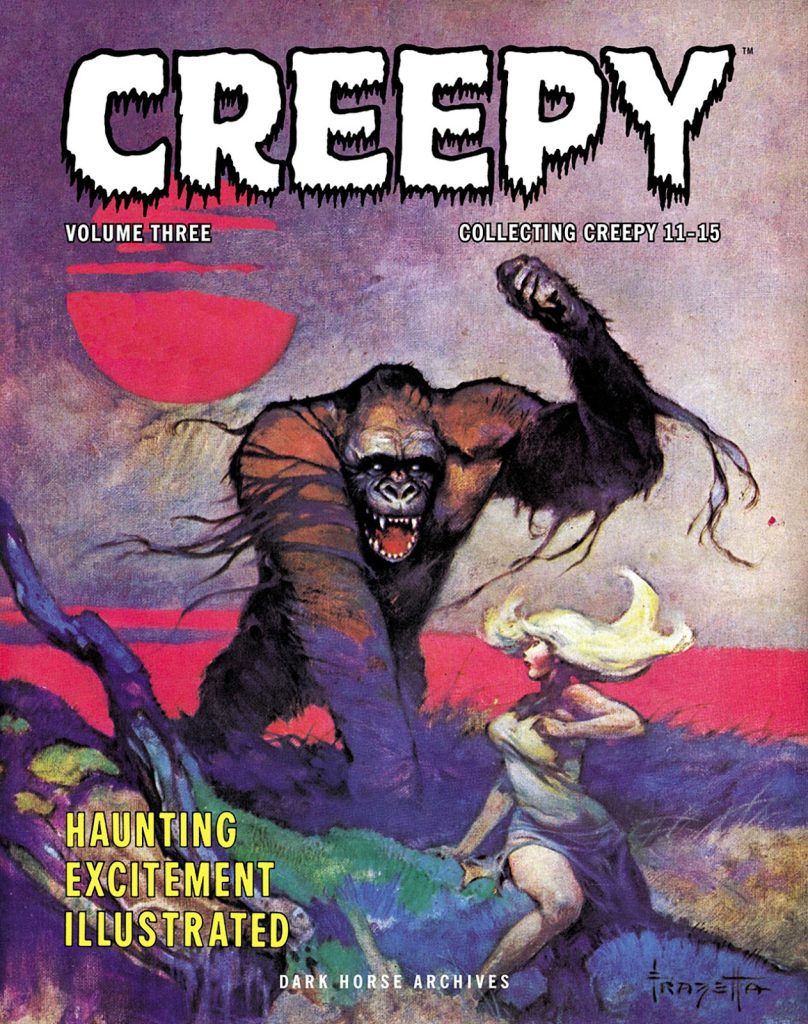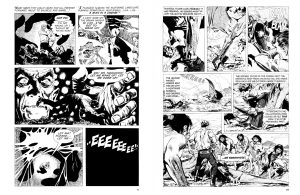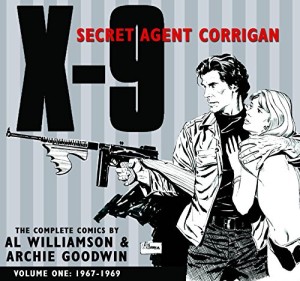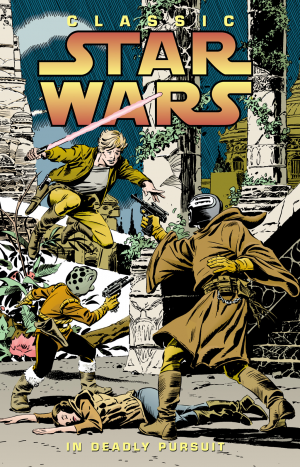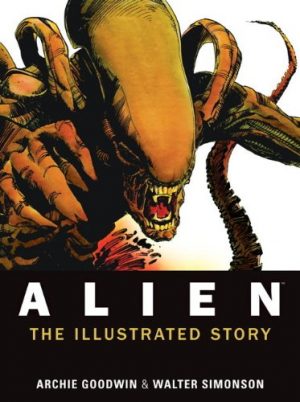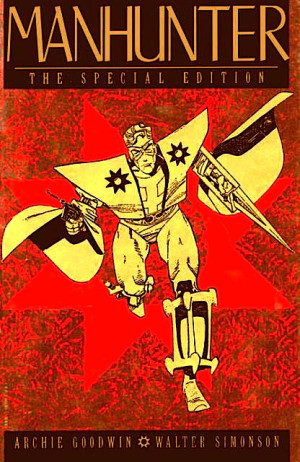Review by Frank Plowright
It’s instructional reading issues of Creepy collected as originally published. The classic material is rightly praised to the skies. Archie Goodwin’s astounding ability to tell a compelling story in any genre combined with a talent for pitching it to exactly the right artist, and the best of those artists being astounding creators resulted in stories that still thrill all these decades later. However, by the time of this material cracks are apparent.
Creepy’s reputation largely rests on the art, and a mouthwatering list of 23 artists are named on the title pages. However, Frank Frazetta only supplies a single cover paintings and Gray Morrow is restricted to covers and a single page strip. There’s only an illustration from Al Williamson, two single pages from John Severin and one from Gil Kane, Frank Brunner’s is fan art, Alex Toth and Wally Wood are altogether absent, and Gene Colan only appears once. Reed Crandall, Steve Ditko and Angelo Torres (sample spread left) do feature regularly, along with the first two comic stories by Neal Adams, his second running to sixteen pages. That still leaves a significant amount of pages from creators not ranked as highly.
In The Warren Companion, publisher Jim Warren notes assorted financial problems meant he could no longer offer premium rates, so more stories are drawn by newcomers and lesser artists, with only Adams (sample spread right) really seizing the opportunity. It should also be noted that while he’s not considered one of the greats, Jerry Grandenetti’s wild stylings are utterly distinctive, and his staring people uniquely disturbing. Manny Stallman’s also one of a kind, but variable. ‘Idol Hands’ is really spooky, while ‘The Black Death’ seems dashed off. Crandall is polished, if featuring some stiff figures, and Torres excellent, but the artistic star turn is Ditko, so imaginative in interpreting different themes over four tales. The nightmares of ‘Second Chance’ are absolute peak Ditko, with astonishing abstractions.
Otto Binder’s adaptations of his Adam Link stories from the original pulps still feature a very human robot leading his way to a cliffhanger ending each episode, but despite a theme of man’s inhumanity toward robot, they’re an awkward fit with the chillers they accompany. Joe Orlando’s art is moody, but not greatly memorable.
Despite newcomers, Goodwin remains the primary writer, still providing immense variety, switching his settings from past to present, and alternating mysteries, classic horror characters and Edgar Allan Poe and Bram Stoker adaptations. While he can be predictable, more frequently his well conceived twists are likely to fool readers to this day, and it’s his consistency holding things together in the face of sometimes indifferent art.
